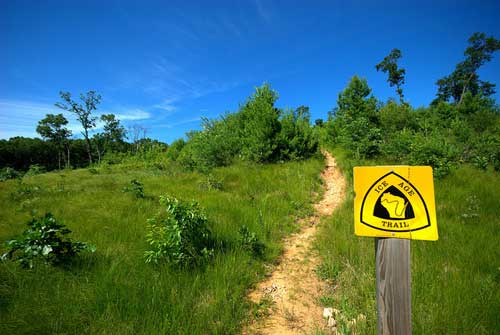
Understand Trail Slope: Don’t Be A Water Quality Dope
It’s raining marbles! Well, not exactly, but the image will help you appreciate proper trail slopes. Yes, slopes, plural.

Every trail on your property has two slopes, grade slope and cross slope. The pitch of the trail as you hike is the grade slope.
If it were raining marbles, they would run straight down the trail due to the grade slope. Often stated as a percentage, the grade slope should average between 1-10%, topping out at 20% for short distances.
Cross slope is the pitch across the trail from one side to the other (i.e., perpendicular to the grade slope), and causes raining marbles to roll off the side of the trail.
“These two slopes must work together if the trail is going to last and keep rain water clean. So we married the slopes under the Rule of 1/3,” says Tim Malzhan, Director of Trail Operations with Ice Age Trail Alliance.
Rule of 1/3
The Rule states that the grade slope should be 1/3 of the cross slope. For example, if the grade slope is 10%, the cross slope should be pitched at 30% (i.e., the grade slope is 1/3 the cross slope). This ratio makes good sense, as the faster water travels down your trail, the quicker you want the cross slope to shed water trailside.
Effectively, the cross slope shortens the distance that water travels down your trail, preventing gullies and keeping your trail intact and the water clean.
How about when the cross slope is set? Let’s say you are building a trail across a hillside pitched at 30%. The cross slope is then 30%, and using the Rule of 1/3, the trail grade slope should be 10%, or 1/3 of the cross grade. Simply stated, the Rule of 1/3 ensures cross slope always has greater influence and the raining marbles (or water) are carried trailside, protecting your trail and water quality.
Good luck building (or improving!) your trails…and don’t slip on the marbles!
